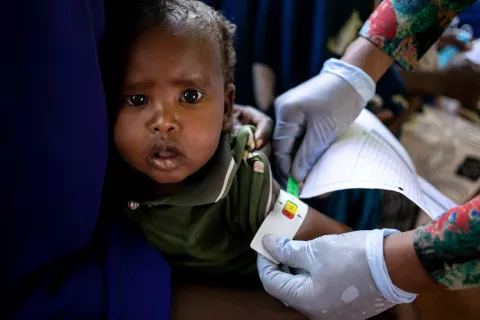' Learning to earning ’ for displaced youth
Unlocking the power of digital technologies

Highlights
The rising number of forcibly displaced persons (FDPs) and the growing duration of displacement have made building economic resilience a priority, particularly for young people. By 2019, the global population of FDPs had doubled to 80 million. The majority of FDPs (86 per cent) live in low- or middle-income countries where host communities are themselves affected by food insecurity, malnutrition and weak labour markets.
Youth comprise a significant share of the forcibly displaced population. Half of all refugees are aged under 18, with young adults aged 18–24 constituting another 13 per cent of the total. In addition, there are nearly 10 million internally displaced persons between the ages of 15 and 24 full of hope but lack opportunities to realize their potential.
Technology is playing a growing role to provide education, training and employment, including in humanitarian and migration responses. By driving a shift to online work and training on an unprecedented scale, albeit not universally, the COVID-19 pandemic has significantly accelerated the use of digital technologies in programmes that support school-to-work transition, including solutions focused on youth who are FDPs, in host communities, or are otherwise vulnerable.
This report, funded in part by the Ministry of Foreign Affairs of the Netherlands’ PROSPECTS partnership, provides an overview of how digital technologies are being used to support youth’s transition from school to work, ‘learning to earning’, in displaced and host communities. Based on a rapid analysis of emerging approaches and lessons in this burgeoning space, the report’s purpose is to inspire concerted attention and action to ensure effectiveness and scale of such digital enablers.



